#secret wars 40th anniversary
Explore tagged Tumblr posts
Text






Hasbro is celebrating the 40th anniversary (2024) of the iconic Marvel Super Heroes Secret Wars storyline (1984) with a new wave of Marvel Legends Series figures paying homage to the classic Mattel action figures from the 1980s.
#marvel comics#marvel action figures#secret wars#marvel legends#secret wars 40th anniversary#hasbro action figures#hasbro pulse con#avengers#x-men#spider-man#venom#wolverine#captain america#iron man#titania#the beyonder#marvel 1980s#marvel 1984#marvel 2024#hasbro 2024
69 notes
·
View notes
Text






Marvel Legends Series Secret Wars X-Men Wolverine Hasbro G0782
Link para compra BR: https://amzn.to/4h5onYm
Buy here: https://amzn.to/3ZrgUgh
#marvel#marvel legends#hasbro#action figures#comics#retro#Super Heroes#40th Anniversary#Secret Wars#guerras secretas#xmen#x men#wolverine#logan#james howlett#weapon x#arma x
21 notes
·
View notes
Text


#adult collectors#adult collectibles#collectables#toys#hotwheels#vehicle#mattel#wolverine#wolverine and x-jet#Spider-Man#Spider-Man and spider buggy#marvel#mcu#marvel comics#marvel universe#marvel superheroes#secret wars#hotwheels racer verse#40th anniversary#card art
10 notes
·
View notes
Text
DIDN'T WANNA FEEL OLD IN 2025? SUCKS TO BE YOU!
HEY THERE PEOPLE OF TODAY AND ROBOTS OF TOMORROW! IT'S ME, CLARK!
Y'know what's funny? All last year peeps kept liking my 'Didn't Wanna Feel Old' journal from 2023. One commenter said I should make a new one for 2024. Jee, ya' don't say? Guess you missed how that was already a thing. Was nobody interested in seeing what all reached a major milestone back in 2024? Ghostbusters, Ninja Turtles, Transformers, they all celebrated their 40th Anniversary, Lion King had its 30th, a lot of cool stuff got that much older. Shame nobody seemed to notice. Ah well, maybe 2025 will be better. Especially when a certain someone is celebrating his own major milestone this year. When, exactly? Read to find out!
Key
Movie
Television
Music
Video Game
Theme Park ride
Comics
Date of Debut
Anything from 1975 turns 50 this year, including...
"Low Rider" by War
Space Mountain (Magic Kingdom) - January 15th
The Jeffersons - January 18th
"Shining Star" by Earth, Wind, & Fire - January 21st
Barney Miller - January 23rd
"Mamma Mia" by ABBA - March 12th
Terror of Mechagodzilla - March 15th
"Sister Golden Hair" by America - March 19th
Disney Springs - March 22nd
Monty Python and the Holy Grail - April 3rd
Microsoft - April 4th
Super Sentai - April 5th
Aerosmith's Toys in the Attic - April 8th
Bronze Tiger (DC Comics) - May
"Rhinestone Cowboy" by Glen Campbell - May 26th
"Fame" by David Bowie - June 2nd
Chicago - June 3rd
"One of Those Nights" by Eagles - June 10th
"That's the Way (I Like It)" by KC and the Sunshine Band - June 10th
"Why Can't We Be Friends?" by War - June 16th
Jaws - June 20th
The Apple Dumpling Gang - July 1st
Moon Knight (MARVEL) - August
The Rocky Horror Picture Show - August 15th
The Great Grape Ape Show - September 6th
The New Tom & Jerry Show - September 6th
Pink Floyd's Wish You Were Here - September 12th
Ben Reily (MARVEL) - October
Saturday Night Live - October 11th
The Wiz - October 21st
"Bohemian Rhapsody" by Queen - October 31st
NBC's Wonder Woman - November 7th
One Flew Over the Cuckoo's Nest - November 19th
Lady Shiva (DC Comics) - December

Anything from 1980 turns 45 this year, including...
X-Men: The Dark Phoenix Saga / Emma Frost / Kitty Pryde (MARVEL) - January
Dazzler (MARVEL) - February
Hobgoblin (MARVEL) - March
"Funkytown" by Lipps Inc. - March 11th
Game & Watch - April 28th
Taskmaster (MARVEL) - May
Friday the 13th - May 9th
"It's Still Rock and Roll to Me" by Billy Joel - May 12th
The Empire Strikes Back - May 21st
The Blues Brothers - June 20th
Herbie Goes Bananas - June 27th
Missile Command - July
PAC-MAN - July
Airplane! - July 2nd
Cheech and Chong's Next Movie - July 18th
Caddyshack - July 25th
Xanadu - August 8th
"Another One Bites the Dust" by Queen - August 22nd
The New Teen Titans (DC Comics) - October
The Creature Commandos (DC Comics) - November
The Scooby-Doo and Scrappy-Doo - November 8th
Alligator - November 14th
Flash Gordon - December 5th
Magnum, P.I. - December 11th
Popeye - December 12th
9 to 5 - December 19th
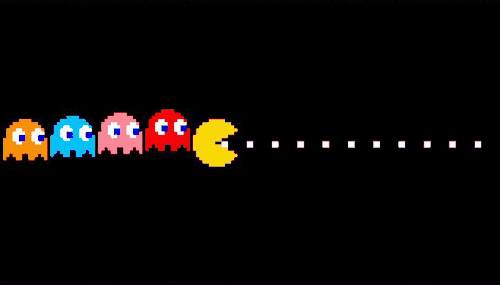
Anything from 1985 turns 40 this year, including...
Ice Climber - January 30th
Brazil - February 20th
"Crazy for You" by Madonna - March 2nd
Moonlighting - March 3rd
"We Are the World" by USA for Africa - March 7th
"Everybody Wants to Rule the World" by Tears for Fears - March 15th
Friday the 13th: A New Beginning - March 22nd
The Care Bears Movie - March 29th
Casey Jones (TMNT) - April
Crisis on Infinite Earths (DC Comics) - April
Web of Spider-Man (MARVEL) - April
Where in the World Is Carmen Sandiego? - April 23rd
Commando - May
Mogo (DC Comics) - May
Rambo: First Blood Part II - May 22nd
John Constantine (DC Comics) - June
Silver Sable (MARVEL) - June
The Goonies - June 7th
"The Power of Love" by Huey Lewis and the News - June 17th
Return to Oz - June 21st
"Money for Nothing" by Dire Straits - June 28th
St. Elmo's Fire - June 28th
Secret Wars II (MARVEL) - July
Back to the Future - July 3rd
Red Sonja - July 3rd
Mad Max Beyond Thunderdome - July 10th
Ghosts 'n Goblins - July 17th
Day of the Dead - July 19th
The Black Cauldron - July 24th
National Lampoon's European Vacation - July 26th
R.O.B. - July 26th
Sesame Street Presents: Follow That Bird - August 2nd
Weird Science - August 2nd
Pee-wee's Big Adventure - August 9th
Teen Wolf - August 23rd
"We Built This City" by Starship - August 26th
The 13 Ghosts of Scooby-Doo - September 7th
Ewoks - September 7th
Star Wars: Droids: The Adventures of R2-D2 and C-3PO - September 7th
ThunderCats - September 9th
Super Mario Bros. - September 13th
Adventures of the Gummi Bears - September 14th
Care Bears - September 14th
Golden Girls - September 14th
Little Muppet Monsters - September 14th
The Wuzzles - September 14th
Spider-Man: The Death of Jean DeWolff (MARVEL) - October
Commando - October 4th
Gauntlet - October 15th
Re-Animator - October 18th
A Nightmare on Elm Street 2: Freddy's Revenge - November 1st
Rocky IV - November 27th
Santa Claus: The Movie - November 27th
Young Sherlock Holmes - December 4th
The Color Purple - December 18th
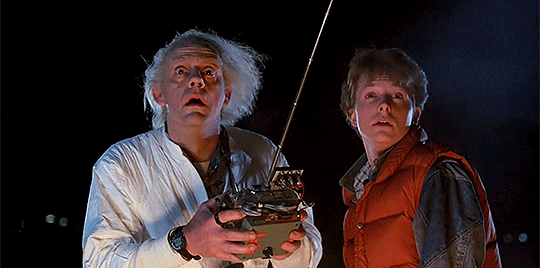
Anything from 1990 turns 35 this year, including...
Leatherface: The Texas Chainsaw Massacre III - January 12th
The Hunt for Red October - March 2nd
"Vogue" by Madonna - March 20th
Pretty Woman - March 23rd
Teenage Mutant Ninja Turtles (film) - March 30th
Snake's Revenge: Metal Gear 2 - April
Ernest Goes to Jail - April 6th
Twin Peaks - April 8th
In Living Color - April 15th
Fire Emblem: Shadow Dragon and the Blade of Light - April 20th
Cartoon All-Stars to the Rescue - April 21st
Barney & the Backyard Gang: Waiting for Santa - April 30th
The Muppets at Walt Disney World - May 6th
Back to the Future Part III - May 25th
The Witches - May 25th
Barney & the Backyard Gang: Campfire Sing-Along - May 30th
Total Recall - June 1st
Universal Orlando - June 7th
Dick Tracy / Rollercoaster Rabbit - June 15th
RoboCop 2 - June 22nd
Gremlins 2: The New Batch - June 15th
Gambit (MARVEL) - July
Die Hard 2 - July 4th
Jetsons: The Movie - July 6th
Ghost - July 13th
Arachnophobia - July 18th
"Blaze of Glory" by Jon Bon Jovi - July 21st
Dr. Mario - July 27th
Pit-Fighter - August
DuckTales the Movie: Treasure of the Lost Lamp - August 3rd
Barney & the Backyard Gang: Barney Goes to School - August 15th
Darkman - August 24th
Jim Henson's Mother Goose Stories - August 25th
The New Adventures of He-Man - September 1st
TaleSpin - September 7th
Attack of the Killer Tomatoes (TV show) - September 8th
Tom & Jerry Kids - September 8th
The Disney Afternoon - September 10th
The Fresh Prince of Bel-Air - September 10th
"Thunderstruck" by AC/DC - September 10th
Law & Order - September 13th
Captain Planet and the Planeteers - September 15th
Goodfellas - September 19th
Wing Commander - September 26th
Mega Man 3 - September 28th
The Secret of Monkey Island - October
Beverly Hills, 90210 - October 4th
Sega Game Gear - October 6th
Troll 2 - October 12th
Night of the Living Dead - October 19th
"Freedom! '90" by George Michael - October 30th
Child's Play 2 - November 9th
Home Alone - November 16th
The Rescuers Down Under / The Prince & the Pauper - November 16th
Rocky V - November 16th
"Gonna Make You Sweat (Everybody Dance Now)" by C+C Music Factory - November 18th
It - November 18th
The Nutcracker Prince - November 21st
Predator 2 - November 21st
Super Mario World - November 21st
Edward Scissorhands - December 7th
Honey, I Shrunk the Kids: Movie Set Adventure (Disney's Hollywood Studios) - December 17th
Kindergarten Cop - December 21st
The Godfather Part III - December 25th

Anything from 1995 turns 30 this year, including...
X-Men: Age of Apocalypse (MARVEL)
Tales from the Crypt Presents: Demon Knight - January 12th
Hercules: The Legendary Journeys - January 16th
Star Trek: Voyager - January 16th
Circle of Life: An Environmental Fable (EPCOT) - January 21st
The O.J. Simpson Trial - January 24th
"This Is How We Do It" by Montell Jordan - February 6th
The Brady Bunch Movie - February 17th
blink182's Cheshire Cat - February 17th
What a Cartoon! - February 20th
Indiana Jones Adventure: Temple of the Forbidden Eye (Disneyland) - March 4th
Star Wars: Dark Forces - March 8th
Chrono Trigger - March 11th
Discworld - March 17th
Major Payne - March 24th
Mega Man 7 - March 24th
Tommy Boy - March 31st
Mortal Kombat 3 - April
Disney's Blizzard Beach - April 1st
Bad Boys - April 7th
A Goofy Movie - April 7th
The Pebble and the Penguin - April 12th
Super Bomberman 3 - April 28th
"Mr. Boombastic" by Shaggy - May
Die Hard with a Vengeance - May 19th
Braveheart - May 24th
Tales from the Hood - May 24th
Casper - May 26th
Congo - June 9th
Batman Forever - June 16th
Pocahontas (nobody's favorite Disney movie) - June 23rd
Apollo 13 - June 30th
Mighty Morphin' Power Rangers: The Movie - June 30th
Comix Zone - July
A Day in the Park with Barney (Universal Orlando) - July 11th
The Indian in the Cupboard - July 14th
Castlevania: Dracula X - July 21st
Waterworld - July 28th
Tekken 2 - August
"Gangsta's Paradise" by Coolio - August 1st
Babe - August 4th
Super Mario World 2: Yoshi's Island - August 5th
"You Are Not Alone" by Michael Jackson - August 15th
Mortal Kombat (film) - August 18th
Phantasmagoria - August 24th
Heroes of Might and Magic: A Strategic Quest - September
Rayman - September 1st
Xena: Warrior Princess - September 4th
The Lion King's Timon & Pumbaa - September 8th
Earthworm Jim (TV series) - September 9th
Freakazoid! - September 9th
Pinky and the Brain - September 9th
The Mark Walberg Show - September 11th
The Drew Carey Show - September 13th
Seven - September 22nd
Showgirls - September 22nd
Halloween: The Curse of Michael Myers - September 29th
Little Bear - October 7th
Street Fighter: The Animated Series - October 21st
Goosebumps (TV series) - October 27th
Leaving Las Vegas - October 27th
Dumb and Dumber: The Animated Series - October 28th
I Have No Mouth, and I Must Scream - October 31st
Ace Ventura: When Nature Calls - November 10th
Twisted Metal - November 10th
Me - November 13th
GoldenEye - November 17th
Worms - November 17th
Donkey Kong Country 2: Diddy's Kong Quest - November 21st
Toy Story - November 22nd
Mega Man X3 - December 1st
Warcraft II - December 5th
Ace Ventura: Pet Detective - The Animated Series - December 13th
Jumanji - December 15th
Dracula: Dead and Loving It - December 22nd
Final Fight 3 - December 22nd
Tom & Huck - December 22nd

Anything from 2000 turns 25 this year, including...
Malcolm in the Middle - January 9th
"Kryptonite" by 3 Doors Down - January 18th
Jack of All Trades - January 22nd
Scream 3 - February 4th
The Sims - February 4th
The Tigger Movie - February 11th
Power Rangers Lightspeed Rescue - February 12th
Reindeer Games - February 25th
Disney's The Weekenders - February 26th
An Extremely Goofy Movie - February 29th
PlayStation 2 - March 4th
Whispers: An Elephant's Tale - March 10th
Final Destination - March 17th
Marvel vs. Capcom 2: New Age of Heroes - March 23rd
Kirby 64: The Crystal Shards - March 24th
Leprechaun in the Hood - March 28th
The Road to El Dorado - March 31st
Between the Lions - April 3rd
American Psycho - April 14th
"With Arms Wide Open" by Creed - April 18th
Mega Man Legends 2 - April 20th
The Legend of Zelda: Majora's Mask - April 27th
The Flintstones in Viva Rock Vegas - April 28th
Excitebike 64 - May 2nd
Gladiator - May 5th
Battlefield Earth - May 12th
"It's Gonna Be Me" by N*SYNC - May 16th
DINOSAUR - May 19th
Perfect Dark - May 22nd
Shanghai Noon - May 26th
Clerks: The Animated Series - May 31st
Vampire: The Masquerade – Redemption - June 7th
Gone in 60 Seconds - June 9th
Titan A.E. - June 16th
Even Stevens - June 17th
Chicken Run - June 23rd
Deus Ex - June 23rd
Me, Myself & Irene - June 23rd
Diablo II - June 28th
Mortal Kombat: Special Forces - June 29th
The Adventures of Rocky and Bullwinkle - June 30th
Final Fantasy IX - July 7th
Scary Movie - July 7th
X-Men - July 14th
Thomas and the Magic Railroad - July 14th
Mario Tennis - July 21st
Nutty Professor II: The Klumps - July 28th
Paper Mario - August 11th
Dora the Explorer - August 14th
Come on Over to Barney's House - August 15th
Maggie and the Ferocious Beast - August 26th
Alvin and the Chipmunks Meet the Wolfman - August 29th
Spider-Man - August 30th
Clifford the Big Red Dog (TV series) - September 4th
Pooh's Hunny Hunt (Tokyo Disneyland) - September 5th
Jackie Chan Adventures - September 9th
Teacher's Pet - September 9th
MTV Cribs - September 12th
O Brother, Where Art Thou? - September 15th
The Little Mermaid II: Return to the Sea (yuk) - September 19th
Tony Hawk's Pro Skater 2 - September 19th
Baldur's Gate II: Shadows of Amn - September 21st
Remember the Titans - September 29th
Donald Duck: Goin' Quackers - October
Jackass - October 1st
Buzz Lightyear of Star Command - October 2nd
Scooby-Doo and the Alien Invaders - October 3rd
Meet the Parents - October 6th
Spyro: Year of the Dragon - October 10th
Book of Shadows: Blair Witch 2 - October 27th
Charlie's Angels - November 3rd
X-Men: Evolution - November 4th
Half-Life: Counter-Strike - November 9th
The Grinch - November 10th
Little Nicky - November 10th
Dr. Seuss' How the Grinch Stole Christmas - November 17th
Rugrats in Paris: The Movie - November 17th
Tomb Raider: Chronicles - November 17th
Hitman: Codename 47 - November 19th
Banjo-Tooie - November 20th
102 Dalmatians - November 22nd
Unbreakable - November 22nd
Grinchmas at Universal Orlando - December
Evil Dead: Hail to the King - December 5th
Dungeons & Dragons (film) - December 8th
Batman Beyond: Return of the Joker - December 12th
Dude, Where's My Car? - December 15th
The Emperor's New Groove - December 15th
Cast Away - December 22nd
Be My Valentine Love, Barney - December 26th
Aqua Teen Hunger Force - December 30th
Harvey Birdman, Attorney at Law - December 30th
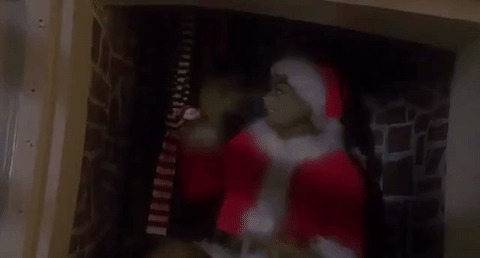
Anything from 2005 turns 20 this year, including...
The Late Late Show with Craig Ferguson - January 3rd
Zoey 101 - January 9th
Resident Evil 4 - January 11th
Elektra - January 14th
Racing Stripes - January 14th
American Dragon: Jake Long - January 21st
Are We There Yet? - January 21st
Playboy: The Mansion - January 25th
Power Rangers S.P.D. - February 5th
Aloha, Scooby-Doo! - February 8th
Pooh's Heffalump Movie - February 11th
YouTube - February 14th
Constantine - February 18th
Son of the Mask - February 18th
Robot Chicken - February 20th
Avatar: The Last Airbender - February 21st
Star Wars: Republic Commando - March 1st
Robots - March 11th
"We Belong Together" by Mariah Carey - March 15th
The Suite Life of Zack & Cody - March 18th
God of War - March 22nd
"Hollaback Girl" by Gwen Stefani - March 22nd
The Office (US version) - March 24th
Krypto the Superdog - March 25th
Doctor Who, Revival Era - March 26th
Grey's Anatomy - March 27th
"Beverly Hills" by Weezer - March 28th
Lego Star Wars: The Video Game - March 29th
Sin City - April 1st
Kim Possible Movie: So the Drama - April 8th
Deadliest Catch - April 12th
Popeye: Rush for Spinach - April 19th
Psychonauts - April 19th
The Muppets Wizard of Oz - April 27th
Star Wars: Episode III – Revenge of the Sith - May 19th
Madagascar - May 27th
Hell's Kitchen - May 30th
House of M (MARVEL) - June
Cinderella Man - June 3rd
Mr. & Mrs. Smith - June 10th
The Adventures of Sharkboy and Lavagirl in 3-D - June 10th
Tarzan II - June 14th
Batman Begins - June 15th
The Buzz on Maggie - June 17th
Breakfast with Bear - June 20th
Battlefield 2 - June 21st
Destroy All Humans! - June 21st
Herbie: Fully Loaded - June 22nd
Steven Spielberg's War of the Worlds - June 29th
Fantastic Four - July 8th
Dance Dance Revolution: Mario Mix - July 14th
Charlie and the Chocolate Factory - July 15th
So You Think You Can Dance - July 20th
Mario Superstar Baseball - July 21st
Sky High - July 29th
Worms 4: Mayhem - July 29th
It's Always Sunny in Philadelphia - August 4th
"Photograph" by Nickelback - August 8th
Lilo & Stitch 2: Stitch Has a Glitch - August 30th
Go, Diego, Go! - September 6th
The Nightmare Before Christmas: The Pumpkin King - September 8th
Hong Kong Disneyland - September 12th
Evil Dead: Regeneration - September 13th
Supernatural - September 13th
Johnny Test - September 17th
Loonatics Unleashed - September 17th
How I Met Your Mother - September 19th
Mortal Kombat: Shaolin Monks - September 19th
Tak: The Great Juju Challenge - September 19th
"My Humps" by Black Eyed Peas - September 20th
Everybody Hates Chris - September 22nd
Ultimate Spider-Man - September 22nd
Wallace & Gromit: The Curse of the Were-Rabbit - October 14th
The Batman vs. Dracula - October 18th
Quake 4 - October 18th
Shadow of the Colossus - October 18th
Call of Duty 2 - October 25th
Nicktoons Unite! - October 26th
The Legend of Zorro - October 28th
Star Wars: Battlefront II - October 28th
Saw II - October 28th
Shamu's Deep Sea Adventures - November 1st
Chicken Little - November 4th
Guitar Hero - November 8th
Zathura: A Space Adventure - November 11th
Shadow the Hedgehog - November 15th
Peter Jackson's King Kong: The Official Game of the Movie - November 17th
Harry Potter and the Goblet of Fire - November 18th
Super Mario Strikers - November 18th
Rent - November 23rd
The Chronicles of Narnia: The Lion, the Witch and the Wardrobe - December 8th
Brokeback Mountain - December 9th
The Phantom of the Opera - December 10th
Kronk's New Groove - December 13th
Peter Jackson's King Kong (aka the best version) - December 13th
The Producers - December 16th
Kingdom Hearts II - December 22nd
Ben 10 - December 27th
Mulan II - December 28th
Smash Mouth's The Gift of Rock
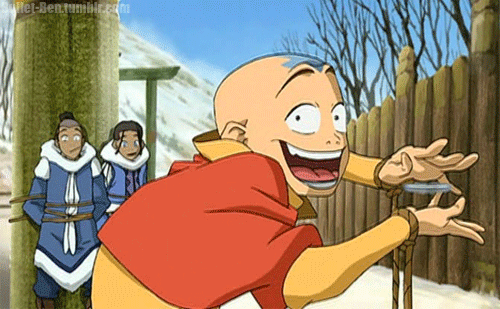
Anything from 2010 turns 15 this year, including...
Kingdom Hearts Birth by Sleep - January 9th
Mass Effect 2 - January 26th
Star Trek Online - February 2nd
Dante's Inferno - February 4th
BioShock 2 - February 9th
Percy Jackson & the Olympians: The Lightning Thief - February 12th
The Wolfman - February 12th
Aliens vs. Predator - February 16th
Heavy Rain - February 18th
Sonic & Sega All-Stars Racing - February 23rd
Mega Man 10 - March 10th
Alice in Wonderland - March 5th
Pink Panther and Pals - March 7th
God of War III - March 16th
Diary of a Wimpy Kid - March 19th
Just Cause 2 - March 23rd
Hot Tub Time Machine - March 26th
How to Train Your Dragon - March 26th
Sam & Max: The Devil's Playhouse - April 2nd
Adventure Time - April 5th
Scooby-Doo! Mystery Incorporated - April 5th
"Teach Me How to Dougie" by Cali Swag District - April 12th
Fruit Ninja - April 21st
Generator Rex - April 23rd
A Nightmare on Elm Street - April 30th
Kick-Ass - March 26th
Prince of Persia: The Forgotten Sands - May
"I Like It" by Enrique Iglesias - May 3rd
"California Gurls" by Katy Perry (and Snoop Dogg) - May 7th
Iron Man 2 - May 7th
Red Dead Redemption - May 18th
Shrek Forever After - May 21st
Super Mario Galaxy 2 - May 23rd
Prince of Persia: The Sands of Time - May 28th
"Dynamite" by Taio Cruz - May 30th
Marmaduke - June 4th
The A-Team - June 11th
The Karate Kid - June 11th
World of Color (Disney's California Adventure) - June 11th
Toy Story 3: The Video Game - June 15th
Inception - June 16th
Jonah Hex - June 18th
Toy Story 3 - June 18th
Transformers: War for Cybertron - June 22nd
Grown Ups - June 25th
Lego Harry Potter: Years 1–4 - June 25th
The Last Airbender (ew) - July 1st
Despicable Me - July 9th
Predators - July 9th
The Sorcerer's Apprentice - July 14th
"Just the Way You Are" by Bruno Mars - July 20th
Teenage Dream" by Katy Perry - July 23rd
Limbo - July 21st
MasterChef - July 27th
StarCraft II: Wings of Liberty - July 27th
Phineas and Ferb Summer Belongs to You - August 2nd
The Expendables - August 13th
Scott Pilgrim vs. the World - August 13th
Metroid: Other M - August 31st
MAD (TV series) - September 6th
Regular Show - September 6th
The Cat in the Hat Knows a Lot About That! - September 6th
Spider-Man: Shattered Dimensions - September 7th
Amnesia: The Dark Descent - September 8th
Halo: Reach - September 14th
Alpha and Omega - September 17th
Easy A - September 17th
FЯED: THE MOVIE - September 18th
Pokémon Black and White - September 18th
The Avengers: Earth's Mightiest Heroes - September 22nd
Legend of the Guardians: The Owls of Ga'Hoole - September 24th
The Social Network - October 1st
Shantae: Risky's Revenge - October 4th
My Little Pony: Friendship Is Magic - October 10th
Just Dance 2 - October 12th
Fallout: New Vegas - October 19th
"Firework" by Katy Perry - October 26th
Star Wars: The Force Unleashed II - October 26th
Megamind - November 5th
Assassin's Creed: Brotherhood - November 16th
Pac-Man Championship Edition DX - November 17th
Harry Potter and the Deathly Hallows – Part 1 - November 19th
Donkey Kong Country Returns - November 21st
The Nutcracker: The Untold Story - November 24th
Tangled - November 24th
Epic Mickey - November 25th
Tron: Evolution - November 25th
Transformers: Prime - November 29th
Black Swan - December 3rd
Doritos Crash Course - December 8th
The Chronicles of Narnia: The Voyage of the Dawn Treader - December 9th
Tron: Legacy - December 17th
Yogi Bear - December 17th

Anything from 2015 turns 10 this year, including...
Strange Magic - January 23rd
Grim Fandango: Remastered - January 27th
Life is Strange - January 20th
The SpongeBob Movie: Sponge Out of Water - February 6th
The Lego Movie Videogame - February 7th
Evolve - February 10th
Fifty Shades of Grey - February 13th
The Order: 1886 - February 20th
Five Nights at Freddy's 3 - March 2nd
Helldivers - March 3rd
Critical Role - March 12th
Mario Party 10 - March 12th
Cinderella / Frozen Fever - March 13th
Transformers: Robots in Disguise - March 14th
The Late Late Show with James Corden - March 23rd
Bloodborne - March 24th
Star vs. the Forces of Evil - March 30th
Archie vs. Predator - April
I Am Bread - April 9th
Marvel's Daredevil - April 10th
Mortal Kombat X - April 14th
Monkey Kingdom - April 17th
Paul Blart: Mall Cop 2 - April 17th
Secret Wars (MARVEL) - May
Avengers: Age of Ultron - May 1st
Wolfenstein: The Old Blood - May 5th
Mad Max: Fury Road - May 14th
Pitch Perfect 2 - May 15th
The Witcher 3: Wild Hunt - May 19th
Tomorrowland - May 22nd
Splatoon - May 28th
Jurassic World - June 12th
Lego Jurassic World - June 12th
Inside Out - June 19th
Batman: Arkham Knight - June 23rd
Terminator Genisys - July 1st
Magic Mike XXL - July 1st
Minions - July 10th
Ant-Man - July 17th
Sharknado 3: Oh Hell No! - Jully 22nd
Five Nights at Freddy's 4 - July 23rd
Pixels - July 24th
Angry Birds 2 - July 30th
Descendants - July 31st
"Hotline Bling" by Drake - July 31st
Mission: Impossible – Rogue Nation - July 31st
Fant4stic - August 4th
Fear the Walking Dead - August 23rd
Until Dawn - August 25th
The Late Show with Stephen Colbert - September 8th
Super Mario Maker - September 10th
Undertale - September 15th
My Little Pony: Equestria Girls – Friendship Games - September 17th
Skylanders: SuperChargers - September 20th
The Muppets - September 22nd
Lego Dimensions - September 27th
Hotel Transylvania 2 - September 25th
The Martian - September 30th
Be Cool, Scooby-Doo! - October 5th
Goosebumps - October 16th
Assassin's Creed Syndicate - October 23rd
Jem and the Holograms - October 23rd
Spectre - October 26th
Supergirl - October 26th
Halo 5: Guardians - October 27th
Ash vs Evil Dead - October 31st
The Peanuts Movie - November 6th
Fallout 4 - November 10th
Marvel's Jessica Jones - November 20th
The Lion Guard: Return of the Roar - November 22nd
The Good Dinosaur - November 25th
Krampus - December 4th
Alvin and the Chipmunks: The Road Chip - December 18th
Star Wars: Episode VII – The Force Awakens - December 18th
The Hateful Eight - December 25th
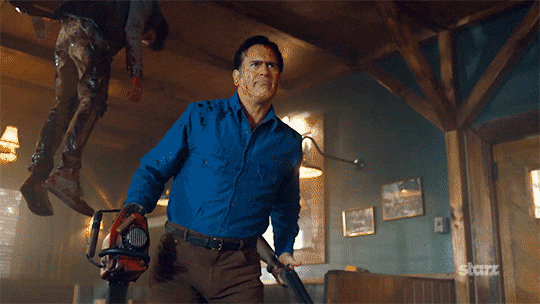
Other Interesting Milestones
The Band Concert, the Mickey Mouse cartoon that inspired me to become a cartoonist, turns 80 on February 23rd
Pinocchio and Fantasia turn 85 on November 13th
Disneyland Resort turns 70 on July 17th
Popeye, Tintin, several more Mickey Mouse shorts, and the song "Singing in the Rain" falls into the Public Domain
Did seeing anything on this list make you feel old? Was there something I forgot to mention? Feel free to let me know in the comments. And what are your resolutions for 2025? Here are mine:
Finish what I start.
Beat Epic Mickey at long last!
Draw 2-3 DUDELZ of the Damned every month.
Post something new (mostly) everyday.
Bring back the 12 Days of Clarktoons this December.
Make money off my artwork somehow.
Get in shape and cut back on the soda.
Run a Dungeons and Dragons campaign based on Wizard of Oz!
Have an awesome year before turning 30!
MAY THE GLASSES BE WITH YOU!
#clarktoon crossing#How the Grinch Stole Christmas#Home Alone#Barney#Space Mountain#Fantasia#Disneyland#Toy Story#Ash vs Evil Dead#Pac-Man#Jurassic World#My Little Pony gen 4#Friendship is Magic#Jack of All Trades#avatar the last airbender#Back to the Future#Herbie#Monty Python and the Holy Grail#pinocchio#Popeye#Tintin#Critical Role#Epic Mickey#2025#new year 2025
10 notes
·
View notes
Text
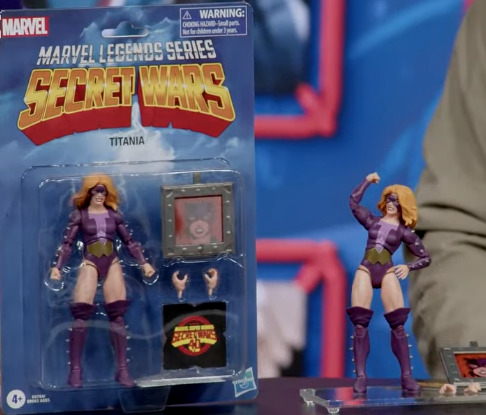
Marvel just confirmed, at PulseCon, a 40th Anniversary of Secret Wars wave, including (of course) a Wolverine and an Iron Man, but we also get..
Titania!!
6 notes
·
View notes
Text

Killing Joke / Pig @ Irving Plaza, N.Y.C; September 12, 2018.
When was the last time I visited Irving Plaza? Ten years ago, when Ministry supposedly had their “farewell” tour. That show opened my eyes up to Meshuggah who turned the entire place insane and a forgettable opening act not worth mentioning. Now, we’re the gatherers as Killing Joke puts us. Next year celebrates 40 years as a band and are currently performing the Laugh At Your Peril Tour through the Americas and Europe. They stand as one of the few acts in existence that have played together for this long and never slowed down or lost power. The miserable humid weather of light drizzle and grey skies could never dampen the audience down for what unfolded.
I assumed it would be only Killing Joke’s time to shine. I had no idea there was an opening act. Here’s a lead singer who comes on stage dressed in an odd get-up, all black head-to-toe. He’s also wearing a silver leather jacket with super-long tassels hanging down from his arms, a flat pilot’s hat, sunglasses, bondage over his privates, and thick black boots. I had zero idea who the opening act was until he shouted “we are Pig!” Really? It’s Raymond Watts himself. What a surprise. Watts / Pig has been a classic and go-to industrial staple during the Wax Trax era. It’s great to hear he’s still performing without a hitch. With his time in KMFDM, “Juke Joint Jezebel” was not an option but a necessity. He performed another big hit in ”Secret Skin” and also preached everything about (sin, sex, and) salvation. He’s wearing the priest’s collar, after all. One good thing about Watts / Pig was his presence: direct, communicative and in many times pointing to his fans (salvation, people); moving, gyrating, and swinging to the tune of his industrial sound and his affinity for stage, orchestra, and cabaret. This is one industrial artist I’m familiar with and still should’ve been more into by now, even despite having one of his titles in Sinsation for some time.
Killing Joke took the stage with a wonderful welcome from the New York City crowd. The entirely original gang of bassist Martin “Youth” Glover, guitarist Geordie Walker, drummer Paul Ferguson, and lead singer Jaz Coleman were very happy to see us as well. They reformed as the original unit before the Absolute Dissent-era so the 40th anniversary is a milestone meant to be. All throughout the night they culled songs, switching from almost every album demonstrating their versatility in punk, dub, industrial, and metal while always staying close to their politically and socially charged message.
They kicked off the 95 minute set with one of their key hits “Love Like Blood” and jumped 25 years into “European Super State”. They went back to the classics with “Eighties”, another familiar one for us gatherers, then forward again with newer songs with “New Cold War” from Pylon. But you can’t make it an anniversary show without going back to where it all started: their 1980 full-length debut which they played five songs from. “Requiem” and a harder live version of “Wardance” were absolutely included. It wasn’t until “Butcher” where the audience furiously broke out in mosh pits. Three cuts from their self-titled 2003 record kept the energy going all throughout, first with the rugged “Asteroid” and also included “Loose Cannon” and “The Death And Resurrection Show”. An hour and 14 songs later, Killing Joke re-treated backstage but came out for a five-song encore that sealed the extended deal.
For an outfit that started and regrouped again in 40 years, they look modest and much healthier than most bands that went that long. Starting with the 1980 self-titled debut to Pylon, Killing Joke’s sound has gotten stronger and more powerful by each record. What truly made their arrival a sweet one was not only in their songs but in themselves as a unit. Witness them in person and you see how gracious they are to perform for their fans. No attitudes, no egos, no pretentiousness. All smiles. You know they were all happy to be there and were extremely appreciative. They show their thanks through great shows, retrospective deluxe sets, and being personable because they know their supporters helped them carry on for all this time.
And then there’s Jaz, whose scraggly looks show his frightened and mesmerized on-stage presence for all to see. That’s Mr. Coleman for you. He’s also jovial, too. His stories of how he once was an unhealthy alcoholic mess that became “Loose Cannon” to Youth’s time dee-jaying industrial clubs in a grittier more dangerous New York City garnered guaranteed laughs from all of us. Most importantly, he also championed personal freedom for all. It’s that integral message from their socio-political themes that’s most essential in these states’ uncertain and tumultuous times. Those messages are what the fans identify with and it’s why they love them so much.
It was one of the busiest shows I seen. Almost not a single square foot of standing room spared and neither were the VIP sections or all sides of the upper balcony. The energy was loud and constant in-between songs and (again) Killing Joke was in great spirits. The grey misty weather would make all of us miserable. Killing Joke’s presence was so great that it lifted all of us out of it.
#Killing Joke#Pig#industrial#rock#metal#NYC#New York City#Manhattan#Jaz Coleman#Geordie Walker#Youth#Pual Ferguson#Martin Glover#Raymond Watts#omega#music#playlists#personal#mixtapes
2 notes
·
View notes
Note
the other me by xan van rooyen (trans mc)
this rebel heart by katherine lock (polyam relationship, two bisexual mcs, one gay side character)
iron widow by xiran jay zhao (polyam relationship, three bisexual mcs, mc is also possibly nb or genderqueer)
call down the hawk by maggie Stiefvater (gay mc, bisexual mc, bisexual side character)
the prey of gods by Nicky drayden (can’t remember the specific kind of rep)
it’s not like it’s a secret (lesbian characters and relationship. please maybe note on the poll that the submitter would really really not recommend this book? i think it’s important to let people know of queer books, but also this book relied on so many stereotypes — about lesbians and Asian-Americans — and had a cheating subplot and was just….)
beating heart baby by lio min (trans mc)
the borrow a boyfriend club by page powars
may the best man win by zr Ellor (trans mc, bisexual mc, nonbinary mc, queer side character)
a promise broken by Lynn o cochroft (trans, aroace guy is one of the two mcs)
not your sidekick by cb Lee (lesbian mc, sapphic relationship, trans side character)
always the almost by Edward underhill
the spirit bares its teeth and hell followed with us both by aj white
a day of fallen night and the priory of the orange tree by Samantha shannon
generation one by pittacus lore (gay mc, not a huge part of the plot though. but confirmed in-text)
last night at the telegraph club by malinda lo
you’re not supposed to die tonight by kalynn bayron
lady midnight and sword catcher both by Cassandra clare
Star Wars: black spire by delilah s Dawson (aroace mc)
Star Wars: the empire strikes back 40th anniversary short story compilation (idk if it counts as a queer book but one short story was a sapphic love story)
one of us is lying by Karen mcmanus
two tuns of fun by
birthday by Meredith russo
invisibly breathing by
i’ll give you the sun by judy Nelson (i think! not sure if i’m remembering her name right)
brooms the graphic novel by jasmine walls
this queer girl is going to be okay by dale walls
two mummies / two daddies (kids picture books)
death’s country by rm romero
redsight by Meredith mooring
the death i gave him by em li xu (tumblr would LOVE this book)
Been outside by shaz zamore
ALSO: a note to op. this blog is such a great idea, but have you considered setting up a google form for submissions instead? they work for people who don’t have Google accounts, and you can export the entries to a spreadsheet automatically instead of manually that way too. if you let submitters view previous responses you can prevent repeats too?
I've queued most of these! Exceptions below:
-Star Wars: The Empire Strikes Back 40th Anniversary short story compilation: since only one of the stories is queer, I'm not going to include it. This is absolutely arbitrary, I realize, but for short story collections, I'm looking for them to be mostly queer.
-Two Tuns of Fun: I couldn't find any book by this name.
-Two Mummies / Two Daddies (kids picture books): are these individual books? I couldn't find anything with these exact titles.
-Beating Heart Baby and The Priory of the Orange Tree were already queued (they were both in my initial batch of queued books prior to going live with the blog).
The google form is a good idea and something I'll consider! At the moment, it doesn't save me any work, and actually creates more. I would need to check every submission anyway to make sure it's correct and in the format I want it in. Currently I've got a Google Sheets spreadsheet with all books (both queued and posted) for people to check if their suggestion has already been submitted. Thanks for the idea, though!
6 notes
·
View notes
Text
Star Wars: Bounty Hunters #39 Preview
Star Wars: Bounty Hunters #39 Preview #MARVEL #marvelcomics #comics #comicbooks #news #mcu #NCBD #comicbooknews #amazon #previews #reviews #starwars #darthvader #vader #starwarscomics #starwarsbountyhunters
Star Wars: Bounty Hunters #39 Preview: SCOURGE OF THE CYBORG! – A DARK DROIDS TIE-IN! Turned into a mindless killing machine, VALANCE is out to eliminate his former crew! Do BOSSK and ZUCKUSS stand a chance? Can even the mighty DURGE stop him? And TARR KLIGSON’S SECRET PLAN is finally revealed! ETHAN SACKS • DAVIDE TINTO (A) • Cover by MARCO CHECCHETTO RETURN OF THE JEDI 40TH ANNIVERSARY VARIANT…

View On WordPress
#comic books#comics#Marvel#marvel comic books#marvel comic previews#Marvel Comics#Marvel Previews#Previews#star wars#Star Wars Bounty Hunters#star wars comics#Star Wars: Bounty Hunters 39#Star Wars: Bounty Hunters 39 Preview
3 notes
·
View notes
Text
"Marvel Super Heroes Secret Wars" Hits 40th Anniversary in 2024
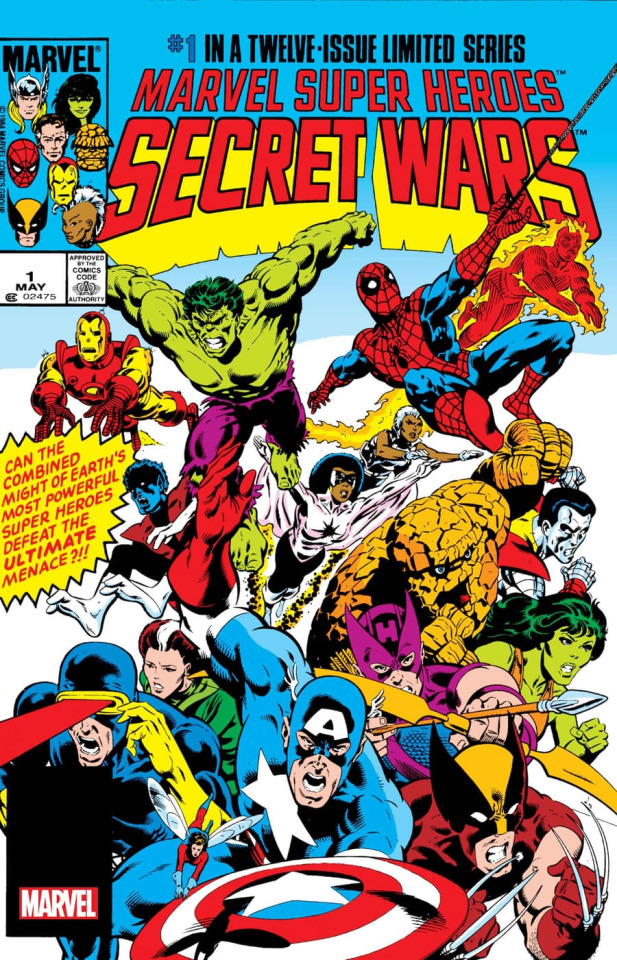
Marvel Super Heroes Secret Wars from Jim Shooter, Mike Zeck, and Bob Layton was a Marvel Comics' first massive comic book crossover event. For the 40th anniversary of this milestone, Marvel Comics has a few celebrations planned - facsimile editions of Secret Wars and Amazing Spider-Man as well as a new saga set during Secret Wars!
During Marvel Super Heroes Secret Wars, The Beyonder assembled Spider-Man and members of the Avengers, Fantastic Four, and X-Men on Battleworld to fight an army of villains. Meanwhile, Doctor Doom and Magneto are each hatching their own plans.
Marvel Comics is re-presenting all 12 issues of Marvel Super Heroes Secret Wars as facsimile editions, meaning you get the ads and all. Each facsimile edition will also be available with new variant covers and special foil variant covers.
Marvel Super Heroes Secret Wars #1 Facsimile Edition (of 12), from writer Jim Shooter and artist / cover artist Mike Zeck, goes on sale on January 3, 2024. Following issues will release monthly.

The anniversary of Secret Wars also marks the anniversary of Spider-Man's black costume, which would one day become Venom. The issue, released the same month as Marvel Super Heroes Secret Wars #1, took place after the events of Secret Wars, leaving readers to guess as to the mystery of this new suit. Marvel Comics is releasing facsimile editions of Roger Stern, Tom Defalco, and Ron Frenz's Amazing Spider-Man #252 and it's following issues monthly, coinciding with the facsimile editions of Secret Wars.
Amazing Spider-Man #252 Facsimile Edition, from writers Roger Stern and Tom Defalco and artist / cover artist Ron Frenz, goes on sale on January 31, 2024.

Announced earlier this year, Marvel Comics is also releasing a new 4-issue story set during Secret Wars. Marvel Super Heroes Secret Wars: Battleworld hails from writer Tom DeFalco and artist Pat Olliffe.
Marvel Super Heroes Secret Wars: Battleworld takes place after Spider-Man receives the black suit. The story will also show characters not previously seen fighting in the original Secret Wars saga, characters like Baron Zemo, Hobgoblin, Electro, and Constritor.
Marvel Super Heroes Secret Wars: Battleworld #1 (of 4) goes on sale on November 22, 2023. The first issue features a main cover by Giuseppe Camuncoli, a variant cover by Pat Olliffe, a variant cover by Francesco Mobili, an homage variant cover and a virgin homage variant cover by Ryan Stegman, a connecting variant cover by Todd Nauck, a Saturday Morning variant cover by Sean Galloway, and an Action Figure variant cover by John Tyler Christopher.
(Images via Marvel Comics - Mike Zeck's Cover of Marvel Super Heroes Secret Wars #1 Facsimile Edition, Ron Frenz's Cover of Amazing Spider-Man #252 Facsimile Edition, Giuseppe Camuncoli’s Cover of Marvel Super Heroes Secret Wars: Battleworld #1)
#marvel comics#marvel secret wars#secret wars#spider-man#amazing spider-man#facsimile editions#battleworld#jim shooter#mike zeck#bob layton#roger stern#tom defalco#ron frenz#pat olliffe#giuseppe camuncoli#TGCLiz
4 notes
·
View notes
Text
In preparation for Oppenheimer’s release in a couple of weeks, I’ve been doing some reading about the Manhattan Proejct. Largely the focus of this has been a man I only learned about last summer: Józef Rotblat, the only scientist to leave the Manhattan Project early over moral objections. Here’s a quick list of things I’ve read and found thought-provoking:
1. The Strangest Dream, a documentary film by the National Film Board of Canada. This places Rotblat’s life into context much more thoroughly than the pieces he authored himself. To properly understand why he would volunteer to build an atomic bomb, you have to know that he was a Polish Jew and was unable to extract his wife and family to the UK after the German invasion started.
2. The Bulletin of Atomic Scientists published a special issue on the occasion of the 40th anniversary of the bombing of Hiroshima. Rotblat’s essay begins on page 9, but really the whole thing at least through the essay about Truman should be read to give context to the Manhattan Project era and the reasoning behind the bombings of Hiroshima and Nagasaki.
Oppenheimer apparently thought [the poisoning of food with radioactive strontium] worthy of consideration, and asked Fermi whether he could produce the strontium without letting too many people into the secret. He went on: "I think we should not attempt a plan unless we can poison food sufficient to kill a half a million men." I am sure that in peacetime these same scientists would have viewed such a plan as barbaric; they would not have contemplated it even for a moment. Yet during the war it was considered quite seriously and, I presume, abandoned only because it was technically infeasible.
3. An interview from Voices of the Manhattan Project, which is highly focused on Rotblat’s work in Los Alamos itself. It has
But immediately [Oppenheimer] struck me as a person, very quick, highly intelligent. I think he had good information. I noticed straightaway that he can take things in almost instantaneously, and he gets the grasp. If you come to him with an idea, he would immediately see it as a major part of this important thing. [...] You could then present it in a way which is much better than the original was. From this point, he is a genius. I am not surprised that he managed to be such a good director for the laboratory. This is one quality which is most important in a place like Los Alamos, where you had so many people with original ideas, but not always capable to present them in a coherent form. He really could master this.
4. Leaving the Bomb Project, an interview self-explanatory in topic.
[General Leslie Groves] said, "You, of course you realize that the main purpose of this project is to subdue the Russians, our chief enemy." Now this was a shock to me, because uh...I always thought that the main idea of the project it was to develop the bomb, if need be, uh...to prevent a Nazi victory. And now I found that this was not. That the main aim...the main aim was that after the war was over -- by that time it looked as if it will be over even before the project is finished -- then I guess, we'll then be able to use this...the atom bomb, as a means of political pressure or whatever else or maybe even military pressure against the Russians.
5. Not authored by or about Rotblat, but relevant to him is Nathan J. Robinson’s essay How To Justify Hiroshima dissecting arguments that treat the bombing as self-evidently justified. (Also interesting to compare/contrast this to the essays in the Bulletin of Atomic Scientists.)
That isn’t to exclude the possibility of making the “better than the alternative” argument. It is merely to say that in order to make an argument justifying the obliteration of 100,000 civilians, slight discomfort will not do. If the utilitarian case is ever to be made, it must be made through tears.
3 notes
·
View notes
Text
SDCC 2023: Mysteries of the original Secret Wars will be revealed in Marvel Super Heroes Secret Wars: Battleworld
SDCC 2023: Mysteries of the original Secret Wars will be revealed in Marvel Super Heroes Secret Wars: Battleworld #comics #comicbooks #sdcc #sdcc2023 #sdcc23
In 1984, Marvel’s greatest heroes and deadliest villains were pit against each other on Battleworld by the unbelievably powerful Beyonder in Jim Shooter, Mike Zeck, and Bob Layton’s Secret Wars! Regarded as the pioneer Marvel Comics crossover event, Secret Wars had an undeniable impact on comic book storytelling and to celebrate this landmark series’ 40th anniversary, Marvel will return to…

View On WordPress
#bob layton#comic books#Comics#francesco mobili#giuseppe camuncoli#jim shooter#marvel#marvel super heroes secret wars battleworld#mike zeck#pat olliffe#ryan stegman#san diego comic-con#sdcc#secret wars#todd nauck#tom defalco
2 notes
·
View notes
Text


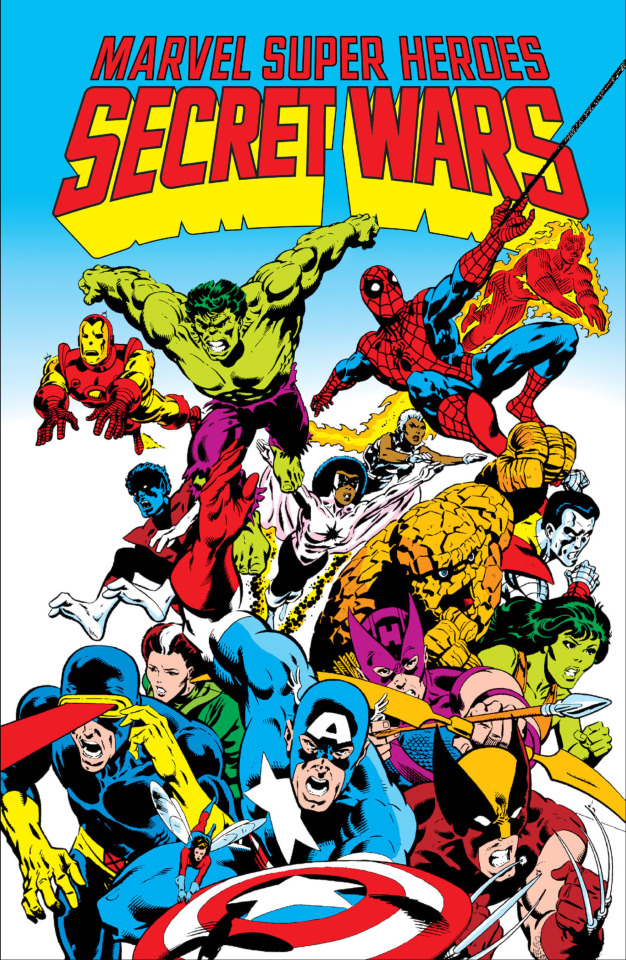
Continuing our celebration of the 40th anniversary of the Marvel Super Heroes Secret Wars limited series (1984) with Mike Zeck's spectacular cover art from Secret Wars #1. In the pencils and inks, note the inclusion of Kitty Pryde, who ultimately didn't appear in the series, as well as Mister Fantastic and Thor, who were removed to fit the logo on the final printed cover.
#marvel comics#marvel collected editions#marvel limited series#marvel super heroes secret wars#marvel secret wars#secret wars 40th anniversary#mike zeck#jim shooter#marvel 1980s#marvel 1984
158 notes
·
View notes
Text
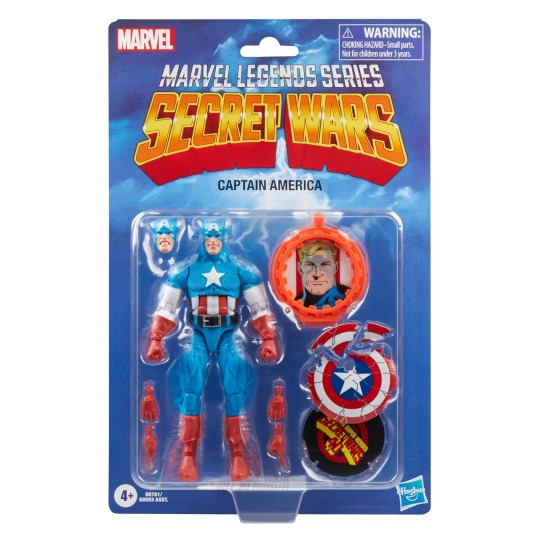





Marvel Legends Series Secret Wars Avengers Captain America Hasbro G0781
Link para compra BR: https://amzn.to/4h5zEYJ
Buy here: https://amzn.to/3XIJZmi
#marvel#marvel legends#hasbro#action figures#comics#retro#Super Heroes#40th Anniversary#Secret Wars#guerras secretas#the avengers#os vingadores#Captain America#capitao america#steve rogers
4 notes
·
View notes
Text
FAN EXPO New Orleans Adds Seven ‘Back To The Future’ Guests For Franchise’s Largest Reunion Ever

Do you see what happens to slackers? Back to the Future fans know all too well, and today FAN EXPO New Orleans added James Tolkan, who as “Mr. Strickland” in the original 1985 film and sequel and his ancestor in BTTF III made the term famous, Claudia Wells (“Jennifer Parker”), Jeffrey Weissman (“George McFly”), Donald Fullilove (“Goldey Wilson”), Harry Waters Jr. (“Marvin Berry”), Frances Lee McCain (“Stella Baines”) and Charlie Croughwell (Michael J. Fox’s stunt double) to the BTTF reunion, January 10-12 at the Ernest N. Morial Convention Center. Alongside headliners Michael J. Fox, Christopher Lloyd, Lea Thompson and Tom Wilson, the celebration of the 40th anniversary of the first installment in the franchise is the biggest reunion ever of the trilogy’s stars.
Tolkan has appeared in more than 80 films and television shows, playing memorable characters in WarGames, Top Gun, Masters of the Universe and many others. He portrayed “Mr. Strickland” in BTTF and BTTF II, and his grandfather “Marshal James Strickland” a hundred years earlier in III. Wells had numerous spots on TV series and TV movies before gaining wide notice as Marty McFly’s girlfriend in the original film. She had regular runs on comedies “Fast Times” and “Off the Rack” among her 30 credits.
Weissman was cast in both BTTF sequels as Marty’s father “George” as part of an extensive resume that includes more than 80 films and series that spans six decades.
Fullilove has taken turns as a live actor and voice actor ever since portraying Michael Jackson in the animated series “Jackson 5ive” in 1971. He played “Goldie Wilson,” later “Mayor Goldie Wilson” and has appeared in such notable series as “The Fall Guy,” “Hill Street Blues,” “21 Jump Street” and “American Dad.”
Waters Jr. had guest appearances on hits like “Laverne & Shirley” and “Cagney & Lacey” before making his mark as the lead singer “Marvin Berry” at the pivotal “Enchantment Under the Sea” dance in the original. He was a cast member of the 1992 Disney show “Adventures in Wonderland” and is a Faculty Emeritus at Macalester (Minn.) College in the Theater and Dance department.
McCain has had roles in several blockbusters, notably Gremlins, Footloose and Stand By Me as well as appearances on hit shows like “Three’s Company,” “St. Elsewhere,” “Better Call Saul” and 80+ others, spanning more than 50 years. Her portrayal of “Stella Baines,” Marty’s grandmother-to-be in the 1955 scenes in the original BTTF earned laughs and later references to jailed “Uncle Joey.”
Croughwell has performed stunt work in nearly 150 productions, including all three BTTF films, and blockbusters like Who Framed Roger Rabbit, Masters of the Universe, The Sandlot and others. He has done Michael J. Fox’s stunt work on other films, including Light of Day, The Secret of My Success, The Hard Way, Casualties of War and others.
In addition to the BTTF reunion, FAN EXPO New Orleans will feature the “Smallville” trio of Tom Welling, Michael Rosenbaum and Kristin Kreuk; plus "Firefly” standout Alan Tudyk, original Star Wars standout Anthony Daniels, “Superman & Lois” headliners Tyler Hoechlin and Bitsie Tulloch, “The Mandalorian” star Giancarlo Esposito, “Doctor Who” Thirteenth Doctor Jodie Whittaker and “Buffy the Vampire Slayer” star James Marsters, “Resident Alien” standouts Alice Wetterlund and Sara Tomko and teen romance “High School Musical” regulars Corbin Bleu and Lucas Grabeel).
FAN EXPO New Orleans features the biggest and best in pop culture: movies, TV, music, artists, writers, exhibitors, cosplay, with three full days of themed programming to satisfy every fandom.
New Orleans is the first event on the 2025 FAN EXPO HQ calendar; the full schedule is available at fanexpohq.com/home/events/.
0 notes
Text

SPIDER-MAN: BLACK SUIT & BLOOD no.3 • cover art • Marco Checchetto [Oct 2024]
40th Anniversary of SPIDER-MAN's black costume—BLACK, WHITE & BLOOD—style! AL EWING (THE IMMORTAL HULK, VENOM) spills a super-secret from SECRET WARS!
Comic • 40 pages • $5.99 US
🕷
#SPIDER-MAN: BLACK SUIT & BLOOD no.3#Marco Checchetto#Night Flight Comics#Comic Mail Orders#NFComics#Spider-man Black Suit & Blood
1 note
·
View note
Text

As you can tell by the cover of the first novel in the series, The Mask of Fear by Alexander Freed (writer of the absolutely incredible Alphabet Squadron series) Reign of the Empire will examine the struggle against the Empire through the eyes of some familiar faces. Mon Mothma, Bail Organa, and Saw Gerrera–all with their own differing perspectives on what must be done to stop Palpatine–play key roles in the trilogy, alongside a new cast of original characters as the galaxy begins to reckon with the grip of the Empire. Here’s the official logline for The Mask of Fear:
Before the Rebellion, the Empire reigned. “In order to ensure the security and continuing stability, the Republic will be reorganized into the first Galactic Empire! For a safe and secure society!” With one speech, and thunderous applause, Chancellor Palpatine brought the era of the Republic crashing down. In its place rose the Galactic Empire. Across the galaxy, people rejoiced and celebrated the end to war—and the promises of tomorrow. But that tomorrow was a lie. Instead the galaxy became twisted by the cruelty and fear of the Emperor’s rule. During that terrifying first year of tyranny, Mon Mothma, Saw Gerrera, and Bail Organa face the encroaching darkness. One day, they will be three architects of the Rebel Alliance. But first, each must find purpose and direction in a changing galaxy, while harboring their own secrets, fears, and hopes for a future that may never come, unless they act.
The Mask of Fear will be followed by two more novels: the first written by Resistance Reborn‘s Rebecca Roanhorse, and the second by Fran Wilde, marking her full Star Wars novel debut after writing for the From a Certain Point of View anthology celebrating Return of the Jedi‘s 40th anniversary. While the first novel will be set in the very first year of the Empire’s rule, Roanhorse and Wilde’s books will jump forward in the Star Wars timeline by several years to explore key turning points in the myriad growing movements of rebellion across the galaxy.
“I’m enormously excited to be a part of this project and explore an era of Star Wars especially rich with the nuanced stories of ‘ordinary’ citizens–people living inside the machinery of the Empire, still figuring out what’s happened to their government and in violent disagreement over ideas of democracy, resistance, revolution, and complicity,” Freed said in a statement provided to io9. “It’s a chance to write a political thriller and spy drama and sweeping historical epic all at once, as well as spotlight Mon Mothma–a character I’ve been passionate about for ages. I can only hope the end result does justice to the grand themes of the prequel films, and manages a similar blend of timelessness and relevance.”
The Mask of Fear will release February 25, 2025, and is available to pre-order now. Books two and three in the Reign of the Empire trilogy are scheduled to release in Spring 2026 and Spring 2027, respectively.
#sw books#starwarsblr#Alexander Freed#Rebecca Roanhorse#Fran Wilde#The Mask of Fear#Reign of the Empire#mon mothma#bail organa#saw gerrera
0 notes